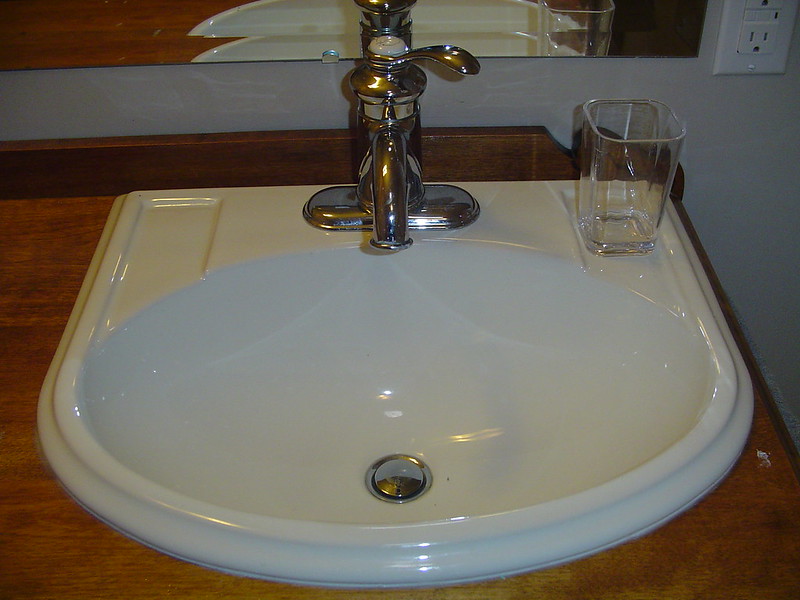If you are renovating your bathroom, along with the countertop, you have to focus on the sink and faucets as well.
You do not want your sink to be looking rusty while your countertop shines bright as new. And you do not necessarily have to hire a professional to get your sink and faucet installed.

With a bit of knowledge and skill, you can do it yourself. Check out this comparison to get some inspiration and ideas for countertop options.
This article will help guide you on how to install your sink and faucet into the new kitchen countertop.
Before we get to the process, you need to ensure that you have all the tools you need to get the job done.
Steps to Install Sink and Faucet
Start your process by correctly measuring your current sink. If the new sink has different dimensions than the one you already have, you will have to make some adjustments.
You can draw the old sink with all the measurements and use this as a shopping reference. Additionally, take a picture of your current plumbing configuration.
If you have trouble reassembling the plumbing system, you can use this picture as a reference.
Additionally, turn off the water supply, both hot and cold, before you start. You will find the shut-off valve under the sink or basement.
Read Also:
Place the newly bought sink in the countertop hole to ensure that it fits. If it does not fit properly, use a tile cutter or jigsaw router to make some adjustments.
If the sink comes with larger dimensions than the existing countertop opening, put the sink upside down.
Using a jigsaw, make the new cutout for fitting. To be more precise, trace an outline first before cutting.
If the sink comes with a template, match it with a mark on the worktop. Place the back edge one and a half inches from the counter while keeping it parallel.
On the back lip, mark the center of your sink. Place the sink upside down and match the mark on the sink with the one on your counter.
Make the necessary adjustment to the sink while leaving 1 ½ inch between the backsplash and back edge.
Make traces around the sink before removing it. After that, measure the width of the lip and subtract it 1/8 inch.
Mark this on the inside of the sink and now connect all the marks before cutting the lines.
The next step is to attach the clips towards the sink bowl. Next, move the supply tubing and tailpiece from the gasket that seals the sink and faucet together.
Then feed them through a hole in the sink before you screw the nuts and washer under the sink deck.
After doing this, you need to ensure that your faucet is able to swing in an arc shape across the sink. Once you are satisfied with the swing, tighten the mounting nuts.
Even in this stage, the sink will remain upside down, and you will have to pack a roll of plumber putty under the lip of the strainer.
You can do that through the drain hole of the sink. Subsequently, place the housing, washer, and gasket onto the strainer and against the sink’s underside.
On the exposed thread, put a little pipe-joint compound. Now you will need to thread the lock nut onto the strainer and then tighten it.
During this step, make sure that the strainer is in the correct position.
Keep your sink upside down while squeezing the blob of silicone caulk across the sink’s lip. After that, you can set the sink upright and into the countertop hole.
Make sure that the front is parallel to the countertop’s front edge. Use an acorn-head supply tube to shut off valves by connecting the faucet.
You can also use braided stainless steel hoses. Now attach the hose to the threaded tailpiece of the faucet.
In this step, you will have to set up the trap adapter onto the tailpiece of the sink drain. For this, you will have to cut the PVC pipe to connect the trap adapter to the trap.
This will also connect the drain elbow to the sink’s waistline. Twist the trap to adjust the lengths and adjustment of the pipes.
You will need to take the drain pieces out and, using a utility knife, clean the cut ends. After that, coat the piece using a PVC primer.
Once the primer is dried, you can put PVC cement on the end of the pieces and join them immediately. Hold them to ensure they remain intact.
Reassemble all the pieces and tighten the threaded connection.
The next step is to install the dishwasher drain line to the tailpiece waste nip and tighten the hose clamp.
Make sure to remove the excess putty from the strainer’s lip. Additionally, you will also need to remove the aerator from your faucet and run the water to its maximum pressure.
It is done to check for any leaks from the connection of the water supply and drain lines. If you find any leaks, together with the nuts until there are no more leaks.
The complex part of setting up a new sink and faucet is connecting the drain pieces between the waistline and tailpiece.
Make sure you start with the tailpiece and work your way down. Importantly, make sure you are wearing all protective gear needed to avoid injuries.
Depending on the material you are using, the type and size of the sink. You can install a new sink at around $50 and $300, and it will take you anywhere around 4 to 6 hours to complete the project.